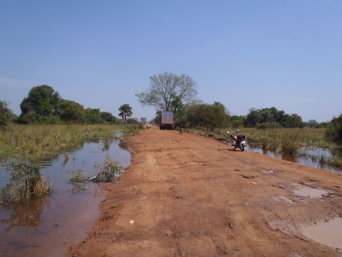- About
- Topics
- Picks
- Audio
- Story
- In-Depth
- Opinion
- News
- Donate
-
Signup for our newsletterOur Editors' Best Picks.Send
Read, Debate: Engage.
| located: | Uganda, South Sudan |
|---|---|
| editor: | Bob Koigi |
News that Uganda and South Sudan have recently agreed on how to redraw a common border that has been at the center of protracted conflict is welcome relief, coming at a time when contested territories across Africa have reached epidemic proportions currently standing at 100.
The South Sudan-Uganda contested border in the Western Nile had seen South Sudan officials blame Ugandan farmers for encroaching their land, with the farmers defending it with everything they have. Armed men from South Sudan would cross over to Uganda and visit destruction, pillage and terror on the Ugandan farmers.
Yet this is one of the many cases that have seen Africa being placed among the continent with the highest cases of contested territories globally in the CIA Factbook. From the oldest conflict in the world, that pitting Namibia against South Sudan over the Orange River, the oil rich Elami triangle that has been the source of a 50-year-old conflict between Kenya, Sudan and Ethiopia, to the land and maritime disputes between the Cameroon and Nigeria, there is no end in sight for these border conflicts
Yet a problem that stems miles away and decades ago, when African colonizers sat in a Berlin Conference and partitioned the continent into what they felt was good for them, is now threatening to spiral out of control.
The African Union aware of the impending catastrophe has over the years set out deadlines for countries to delineate and demarcate their borders. The latest is the end of this year, and yet only a paltry 30 per cent of the 80,000 kilometers’ borders have been demarcated. This, even as more countries continue waging war on each other and seeking redress in the International Court of Justice and Permanent Court of Arbitration. What is worrying is the trend the conflicts might take going forward. A scramble for new resources like oil and mineral deposits, dwindling pasture and food in the wake of burgeoning population and climate change are already driving people out of their traditional homes and seeing encroachment at unprecedented highs.
But solutions to these conflicts do not lie in the long protracted judicial processes and endless commissions whose recommendations are out of tune with the people in conflict. The ultimate answer is in domestic and homegrown mechanisms. This for example include having a panel of elders from parties to conflict who have watched the genesis of the conflict. They are well respected on the ground and would easily strike a compromise. Secondly strengthening domestic institutions like East Africa’s Intergovernmental Authority on Development and the Economic Community of West African States (ECOWAS) would go a long way in ameliorating some of the situations that have gone on for decades and still no sign of truce.
But mostly importantly is identifying and taming potential sources of conflicts early enough which for example include a scramble for limited resources. Pastoralists in drought stricken areas like Ethiopia have managed to comfortably share the dwindling resources and co-exist. Africa can borrow a leaf from them.
Photo: JennaCB123/CC BY-SA 3.0
